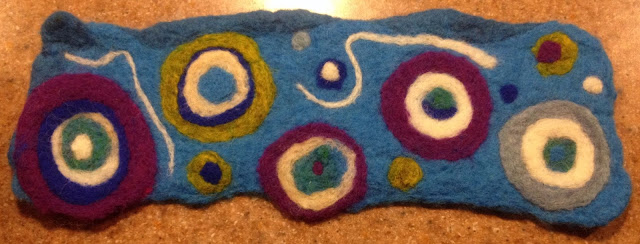I recently started experimenting with needle and wet felting after a generous friend gave me some of her beloved wool stash!
While I've been dabbling with etextiles for about three years, my interest in wool as a medium was piqued by Barbara Liedahl's Ultimate Felt Bracelet with LEDs Instructable (CC BY NC). A fresh take on an old idea, Liedahl's detailed tutorial inspired me to set aside the craft store felt to make something unique.
My first pieces of felt were fun to make, even if they were a tad on the bulky side.
Needle felting propelled me into a meditative state almost immediately!
While I was happy that I'd used slow flashing 5mm RGB LEDs to add visual interest, I thought my sewing along the edges looked a bit sloppy.

In the second iteration, I added a snap switch and substituted machine stitching along the edges.
 |
| Circuit details of the snap switch are depicted below, although I used different LEDs for this project. |

Thank you, Barbara Liedahl!
Here are a few more bracelets I've made for friends, including one that incorporates an Attiny85 (bottom).









